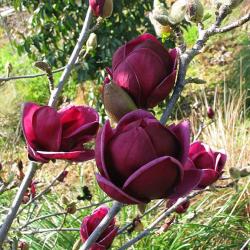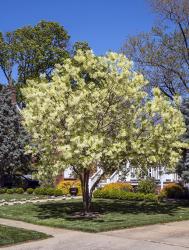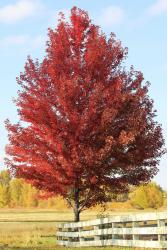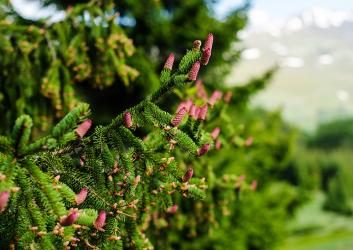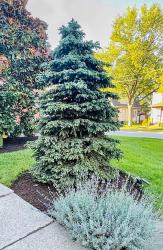What is a specimen tree? Specimens are often highly ornamental or eye-catching trees planted apart from other trees or tree groupings. Their interesting attributes make them the perfect centerpiece for your garden’s design.
Stand-Out Features: There is not one particular attribute that makes a tree a specimen tree; instead, you can choose whichever tree has the right characteristics for you. Flowering trees can be excellent options, especially if blossoms are showy and long-lasting. Other trees are lauded for their forms, such as the striking shape of a weeping willow. Also consider choices with peeling bark, twisting branches or stunning fall foliage.
Decisions, Decisions: Many different factors go into choosing the correct specimen tree for your landscape, such as your existing landscape layout, soil and water requirements, climate, location and available light. If you find a particular tree beautiful, make sure to consult a local landscape professional to learn more about what it needs to thrive in your space.
Waldbrunn Blue Spruce is probably my favorite of all the spruces. It's a standout in any landscape at any size due to its layered branching and unique steel-blue needles. The ones we bring in are unique since this plant is usually found in short, shrub form. The Waldbrunn, like most spruces, loves full sun and hates wet roots. No pruning is needed for this beauty and the size you see is the size you get since it's so slow growing, so it will not outgrow the space its planted in. Andria L. Graeler, Chesterfield Valley Nursery.
Fifteen years of breeding produced the special and compact Magnolia Genie. This smaller tree produces loads of sensational black-red blossoms that open to a deep, velvety red with a slight aubergine hue. These showy Tulip-shaped flowers open in spring and, if kept well watered, will rebloom in summer. This petite pyramidal tree matures to about 10-13 feet tall, making it ideal for plantings near patios, flanking doors against homes or tucked into mixed gardens. Ann Lapides, Sugar Creek Gardens.
The Acer Rubrum “October Glory” red maple provides an outstanding and reliable bright orange to deep, reddish purple fall color, even in warmer climates. It’s a tall form with a dense, rounded crown and large, medium green leaves in spring and summer. The foliage is held on the tree later into fall than with most cultivars. October Glory is a superb choice as a high-profile deciduous shade tree for larger landscapes. This is my personal favorite red maple that performs very well in St. Louis soils and climate. David Sherwood, Sherwood’s Forest Nursery.
As if a conifer could bloom! The vibrant red that adorns the tips of Picea abies “Rubra Spicata” is almost always mistaken for flowers when it appears briefly each spring, but it's actually just the new growth tips of this upright Norway Spruce. It grows relatively slowly to about 12 to 8 feet in 10 years, but eventually becomes a large tree with an open habit. It needs full sun, well-drained soil and a prominent site where it can be enjoyed for its lovely, symmetrical form and inviting dark green foliage. Kathie Hoyer, Bowood Farms.
The golden-tipped needles and graceful form of picea orientalis “Skylands” make it an ideal specimen tree that adds year-round color to your garden. It’s a slow grower, reaching 25 feet tall and 15 feet wide at maturity. New spring growth emerges bright yellow, fading to a rich gold that stands out against darker green interior foliage, which is a striking contrast to its bright red cones in spring. Needles remain golden throughout the winter. Skylands can grow in full sun to part shade. Color will be brightest in full sun, a softer lime green in shade. Foliage can burn in the hot summer sun, so it may benefit from some afternoon shade. Young plants in full sun should receive ample water. Select a site protected from strong winter winds to avoid winter burn. Mike Curran, Timberwinds Nursery.


